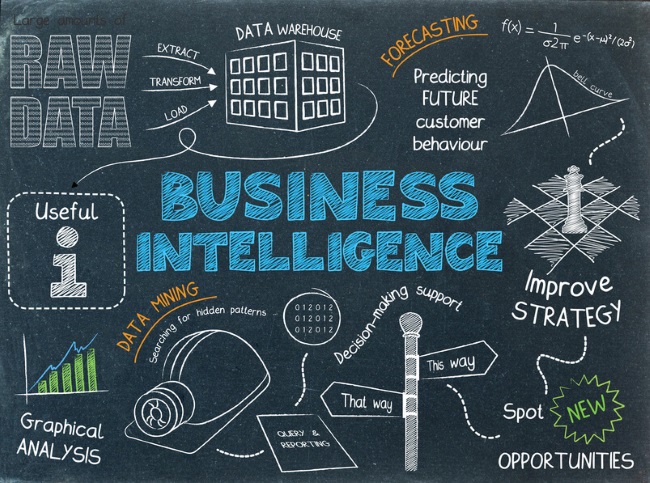In today’s increasingly competitive world, business decisions can make or break the chances of companies’ success. While it’s easy to say that many business decisions are dependent on an organization’s ability to obtain information, actually gathering that information can be a major challenge because of two reasons:
- Getting accurate information can be very difficult without the right tools.
- Because of the fast-paced nature of many of today’s industries, any information gathered may quickly become irrelevant by the time the management is able to come up with decisions.
While it can be challenging, obtaining and interpreting information in the age of big data is not only possible, it can be done very efficiently if one has access to the right technologies and strategies.
Business Intelligence
Being able to acquire, interpret, and store relevant information requires multiple tools and processes that are designed to analyze data from both external sources and internal sources. These tools and processes are collectively known as “business intelligence” or BI.
Since better business intelligence makes for more informed decision-making, a business must focus on optimizing all the elements that make up their BI. Optimization often starts with the technological elements because efficient processes rely on having the right tools. One of the most valuable technologies today that can greatly improve BI is a real-time data integration software that allows log-based change data capture.
ETL and ELT
Before understanding the role of change data capture however, one should take a look first at the these two types of approaches to acquiring and storing data: ETL (Extract, Transform, and Load) and ELT (Extract, Load, and Transform). Here is a quick rundown of how these processes work:
ETL
Raw data is extracted from a source, transformed in order to prepare it for loading to the database (with the help of ETL tools), and finally loaded to the target database, ready to be accessed by business managers to aid them in making the right strategy.
ELT
Raw data is extracted from a source, loaded directly into the target database, and then transformed to the proper format for later access.
While the two processes have their advantages and disadvantages, both are still limited in terms of response times. Extracting raw data requires moving large volumes of data from the source, which can eat up a lot of bandwidth and cripple normal business operations. This is why extraction often takes place during off-peak times or beyond operating hours. Unfortunately, this also means that the information available in the database might already be old and might no longer be an accurate representation of the data currently in the source once a business is able to process it
Change Data Capture
Change data capture is a data replication process that aims to provide real-time information through a two-step process. First, CDC detects changes in the source system. Next, parts of the data affected by the captured changes are flagged. The flagged data is then added, overwritten, or deleted before extraction. Since there’s no need to move parts of the data that are already outdated, smaller batches of data can be extracted, transformed, and loaded when necessary.
Because CDC reduces the volume of data moving from source to target database, the process provides a few key benefits that improve business intelligence when combined with ETL and ELT. Extraction and loading are no longer as resource-intensive as before, so there’s no longer a need to wait for off-peak or night hours before extracting data from sources. Change data capture allows companies to integrate data from numerous sources into a consolidated data warehouse or enterprise data lake, whereby ELT and ETL tools are able to process data in smaller batches periodically throughout any given day. In the end, BI becomes faster, more accurate, and more resource efficient.
An effective business intelligence is instrumental to helping a business gain a competitive edge over its Rivals. A CDC-improved BI doesn’t just help managers make better decisions through accurate data delivery and analysis, it also allows a businesses to adapt faster to changes and trends in their industries. This way, they are able to cut down on losses and maximize their profits.
